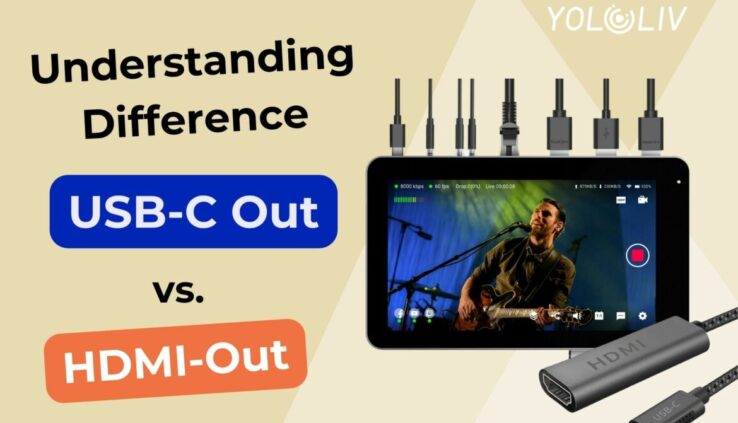Exploring the Versatility of YoloBox: USB-C Out vs. HDMI-Out
By Jennifer P
The blog post “Exploring the Versatility of YoloBox: USB-C Out vs. HDMI-Out” by Ellie Hua for YoloLiv discusses the various connectivity options of the YoloBox, specifically focusing on the USB-C Out and HDMI-Out ports, and how they can enhance live streaming experiences.
The USB-C Out port on the YoloBox offers significant versatility. When connected to a computer via a USB-C cable, the YoloBox can function as a powerful webcam or capture card. This allows seamless integration with live streaming software and supports recording purposes. Whether hosting a webinar, gaming session, or virtual event, the USB-C Out port ensures smooth connectivity and high-quality video output, making it a valuable tool for various streaming scenarios.
On the other hand, the HDMI-Out port is designed to expand display options. It allows users to connect the YoloBox to external displays, projectors, or recording devices with ease. This is particularly useful for real-time monitoring of streams or sharing content with a live audience. The HDMI-Out port guarantees crisp and clear video output, ensuring that the content is displayed effectively on larger screens.
Choosing the right connection option depends on specific needs. The USB-C Out port is ideal for those seeking versatility and compatibility with computers and other USB-C devices. Conversely, the HDMI-Out port is the better choice for connecting to HDMI-compatible displays and projectors, especially when addressing larger audiences.
In conclusion, by exploring and utilizing the USB-C Out and HDMI-Out ports effectively, YoloBox users can significantly enhance their live streaming experience. These connectivity options allow content creators to connect more deeply with their audience, improve their presentations, and stand out in the crowded digital landscape.
Read the full article by Ellie Hua for YoloLiv HERE
Learn more about YoloLiv HERE

